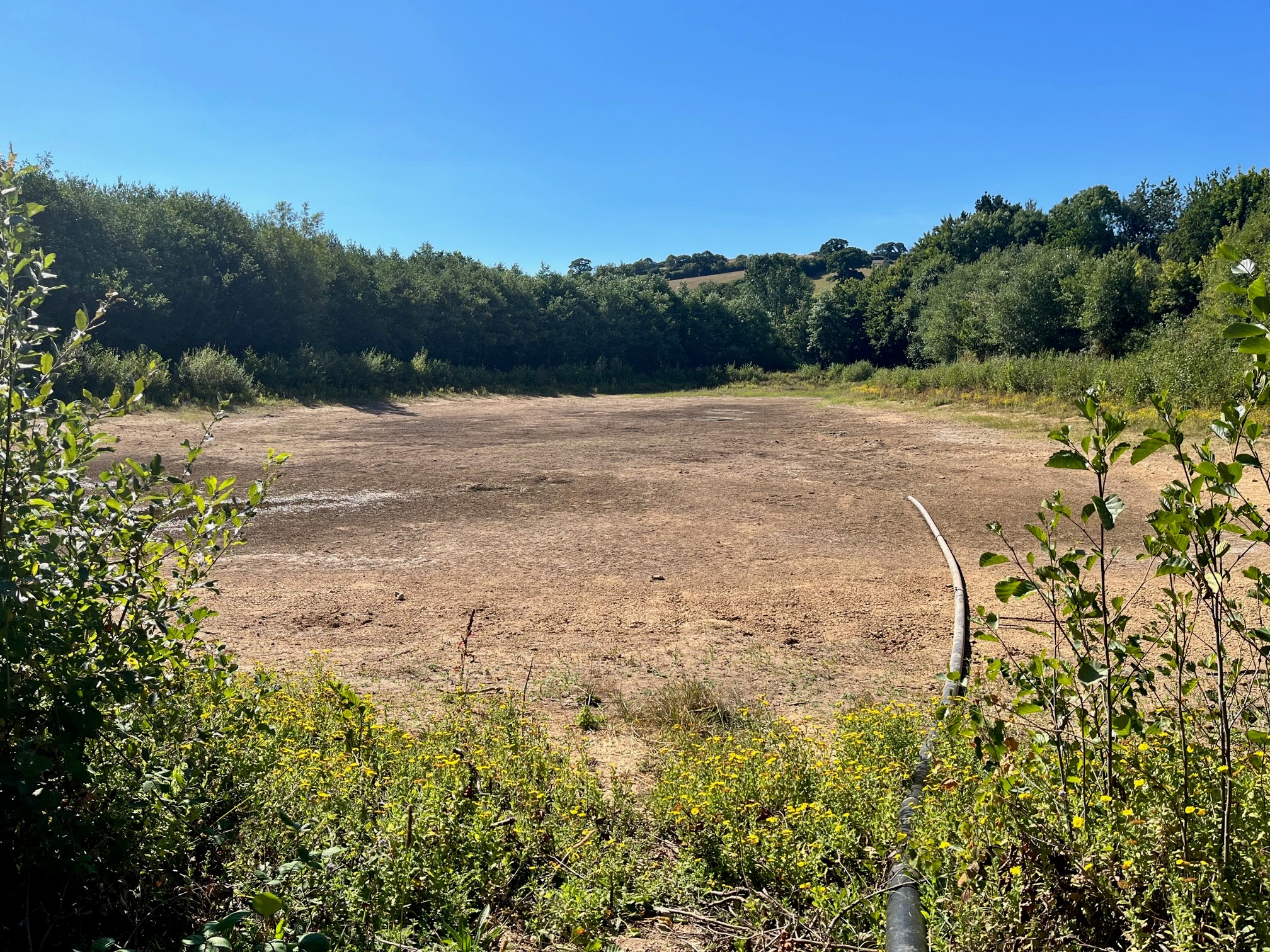Ten years ago, a visiting director from the Met Office advised me to invest in reservoirs, field drainage, and polytunnels in preparation for climate change. Confidence on the detail was low, but she correctly predicted that the main problem for farmers would not be rising average temperatures, but more the loss of the predictable, temperate weather patterns that agricultural practice is built on: more and longer droughts in summer, interspersed with unpredictable deluges, and wet winters with water-logged soils.
We have since more than doubled our area of polytunnels and volume of water storage, but it still isn’t enough to provide resilience to the changes we are now seeing. We did come close to building another 10,000m3 of water storage after the drought of 2018, but with so much uncertainty around farming post-Brexit, it was hard to justify an investment with a 50-year return.
We are not alone; despite booming executive pay, bonuses, and investor dividends, the UK’s water companies (privatised in 1989) have not built a single reservoir since 1991. More reservoirs were built during World War II than in the 33 years since privatisation.
Watching crops wither and wilt under a merciless sun, as the dry clay linings of our empty reservoirs crack, I lament our own inadequate assessment of the risk that climate change posed and the investment needed for resilience. It costs about £5 per m3 of water contained to build a clay-lined reservoir.
For those of you who are not accountants, that might sound really stupid – and you would be right. Doing nothing and hoping for the best is not the way to fight, or cope with, climate change. Guy Singh-Watson
In a dry year, 600m3 of water are needed to grow an acre of lettuce, which will yield 20,000 heads worth £10,000 at harvest; so, an investment of £3000 (£5 per m3 x 600m3) can pay for itself three times over in one year if it saves a crop.
The problem is that you might only have used that extra water once every 20 years in the past, and perhaps once every five years in the future. Combined with the average profit on a crop of lettuces (very different to the sales value) being so low, this makes it hard to accommodate the return on investment in the budget without a much needed, but increasingly rare, very long-term view on investment.
For those of you who are not accountants, that might sound really stupid – and you would be right. Doing nothing and hoping for the best is not the way to fight, or cope with, climate change. We should have spent the money, and so should our water companies.









Well done for having the foresight to build extra reservoirs in the first place. Greater water storage capacity will be more necessary in future years, even if we don’t get another summer, and preceding dry winter and spring, like this for a few years. I’m just wondering why another reservoir rather than a form of covered water storage?
As anyone with a garden pond will know, you can lose a lot of water through evaporation. So why not underground tanks? Our local water supplier collects water into tanks. They aren’t even thinking of bringing in a hosepipe ban yet; whereas other nearby water suppliers, who have reservoirs and extract water from (already low) rivers, already have. Mind you, if one supplier in particular actually extracted a digit or three and got on and repaired all the leaks in their pipework rather than paying fat bonuses to their bosses . . . Ahem.
We have four water butts for our garden. They emptied a few weeks back, around the previous Hot spell, and we’ve been using tap water on our veg since. We’re in the process of installing another, bigger butt, to increase our water storage. Here’s hoping.
Then a project for winter – dig a garden pond, because when it rains again, the slugs and snails will be out, hungrier than ever. If anyone has ‘spare’ frog or toadspawn next spring, I’d be interested!
Just so so very glad we were blessed enough financially two years ago to have a 5,000 litre rainwater harvesting tank system put in. [Buried in the front garden].
It was done when having builder and other trades in anyway to convert garage to downstairs bedroom. That was always planned in choosing the house as we both have leg issues. But it was a nightmare for the plumbers and electrician to route the upward feed to the new dedicated header tank in the upper loft and new feeds to the two original and one new loo. Plus the washing machine and front and back garden taps. All through the existing house with a minimum of visible pipework. Also data cable alongside the riser to communicate to the submerged pump when to run and stop. And suitable power for the pump. [electricity underwater requires professional work!]
Why oh why is it not compulsory in law to fit these systems to all new builds, when it would add little to the cost? It would also reduce flash flooding in storms! [Our overflow system has only been triggered in one storm in two years]
In N Derbyshire we haven’t yet run dry, though I limit myself to targeted watering can use on the veg and have almost abandoned the decorative pot plants at the front. I think we would have run dry, like Beeliever if we were further south.
Happy to answer anyone’s questions about the system.
Denby
Yet again we seem to suffer from the modern British way – too much talk and not enough action! for many years the so called “powers that be” have talked about storing water whilst wasting more than we store or need on foolish things – like Immigration – the land can only support so many people in all things before WE MUST do something about it! It seems to me that whilst we allow (and we are allowing them to come in that is the truth – if we didn’t want them there are ways to stop them) many to come in we are not doing the things we need to do to support those people. They are here, that’s it so why can’t we do something about it? I have nothing against immigration, generally we need a certain amount with their new abilities to keep the country running – what we don’t need is those extra mouths to feed when we do nothing about it? Homes, Public Transport, Larger and more Efficent Facilities such as Power and Water Storage to help more people – but no we just talk about it!
Why oh why do we still flush toilets with good clean fresh wholesome water? Allow so called “Grey Water” to run off into rivers etc. and down to the sea (grey water is the stuff used in your washing machine etc. lightly contaminated with various soaps etc. Still good for irrigation but largely forgotten about). Why have so many small reservoirs been allowed to rot away, many years ago most small towns and villages had their own which ensured that the place concerned had sufficient water for normal use before needing to go to the back up of a larger reservoir – all in the name of centralisation and so called efficency [closer I’d say to profit] and so the questions go on – but nobody does anything about it except talk . . . . . . . . I wonder what the next panic will be about, no doubt something to justify forgetting about a lack of water throughout the land! In ten to fifteen years time it will all come around again and of course nothing will have been done. But still the profits will have been made and the rich will get richer as the poor get more and more and poorer!
the Walrus
Just seen a reply from South West Water on their facebook page
South West Water
In the last 15 years, we have invested around £3.4 million in three new reservoirs, purchasing Park Lake in 2007, Stannon Lake in 2008, and Hawksmoor in March, 2022. These sources combined provide an additional 4,523 million litres of raw water storage for drinking water.
Is this true do you think?
It seems that up to 25% of treated water is lost from leaks, more in some areas. Where does it end up and is any of it being useful? Thanks to anyone who knows the full story.